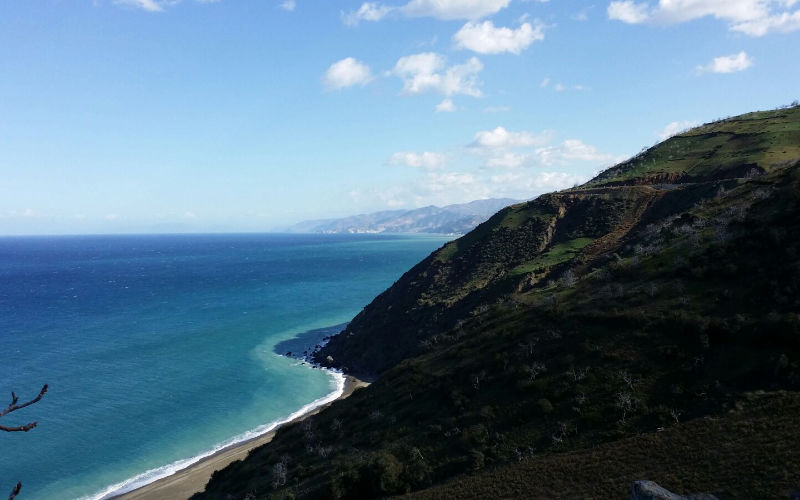Magnitude 4.5 Earthquake Strikes Off Morocco’s Northern Coast Near Nador

Geology experts and specialists in natural seismic phenomena assure that there is no link between the earthquake in Al Haouz and the seismic shock that hit the coast of Driouch province, felt by the inhabitants of the northern cities, including Nador and Al Hoceima, in the early hours of Monday morning.
On Monday, a seismic shock of magnitude 4.5 on the open Richter scale was recorded in the Driouch province, 55 km southwest of the city of Nador, in the Oriental region, according to the National Institute of Geophysics (ING). The shock, whose epicenter is located off the coast of Driouch province, occurred at 1:40 am, according to the National Seismic Monitoring and Alert Network. Occurring at a depth of 16 km, the shock occurred at a latitude of 35.531°N and a longitude of 3.502°W. According to experts in geology and specialists in natural seismic phenomena, this shock is only the result of the convergence of the African and Eurasian plates and has nothing to do with the September 8, 2023 earthquake.
"These seismic shocks are not related to the Al Haouz earthquake, because the latter has its own center and focus from where the earth movement began, and what the inhabitants of Al Hoceima and Nador felt is far from the repercussions of the September 9 earthquake last," says Mohamed Abarkan, a geology expert and professor of geology at Mohammed V University in Rabat, in a statement to Alayam24. According to his explanations, these shocks occur due to fractures and faults caused by the accumulation of energy due to the lack of movement of the earth’s plates. "Sometimes there is a lot of friction between the tectonic plates, which causes earthquakes," he added, noting that "earthquakes always exist in all regions of the world, but their intensity varies." Furthermore, Abarkan admits that the Al Haouz earthquake continues to cause aftershocks in the region where it occurred, and that this is a natural phenomenon.
Abderrahmane Haradji, an expert in geology and professor of physical geography, agrees. "This shock is natural, without any connection to the Atlas-Al Haouz earthquake that occurred on September 8 last, and is not an aftershock of it," he told the same media. Its occurrence is rather explained by its particular location, where the earth’s crust is crossed by deep fractures, not recent, but present in the rocky base belonging to the primary geological era, hundreds of millions of years old, periodically reactivated by the incessant and intermittent movement."
He specified that this seismic shock occurred at midnight (May 27, 2024), 45 km northeast of the city of Al Hoceima, with a magnitude slightly above 4 on the Richter scale, and a focal depth of 10 km in relation to the hypocenter. With these characteristics, the shock occurred in the western Mediterranean Sea, called the Alboran Sea, and should be considered normal and usual in terms of context, location, time and magnitude, explains the expert. According to him, in northern Morocco, there is a convergence zone of the two large plates, African and Eurasian. "The vibration is a natural phenomenon and nothing new or surprising, as it is an area engaged in an uplift process for tens of millions of years (the Rif region), or even more than 200 million years (the Alpine region including the Atlasian and Rifian units)," affirms the academic.
"The density of seismic activity in the north (of Morocco) is explained by the proximity of the collision between the two plates mentioned above, between which a small plate, the Alboran plate, is inserted. This also explains the relative and continuous calm of the south, due to its distance from the northern focus of tension, and its connection with the stable African shield south of the major Atlas unit and its extensions to the east in Algeria, Tunisia and beyond," notes Haradji. And he adds: "But the fact that the Atlantic (or Mediterranean) region is separated from its South Atlantic extension by a large fracture, and that the North Atlasian units are also framed by major main fractures, can sometimes make earthquakes around them strong despite their rarity, as the region experienced with the Atlas-Al Haouz earthquake and that of Agadir."
Related Articles
-

Moroccan Cities Clash: Wedding Halls Spark Noise Pollution Crisis and Human Rights Debate
4 September 2025
-

Rif Protest Leader Zefzafi Breaks Silence: Patriotic Speech at Father’s Funeral Stirs Al Hoceima
4 September 2025
-

Illegal Beach Sand Mining Near Tangier Sparks Environmental and Economic Outcry
4 September 2025
-

Surveillance Footage Exposes Tourist Robbery Ring in Tangier Court Drama
4 September 2025
-

Rif Protest Icon’s Father Dies: Ahmed Zefzafi’s Passing Reignites Hirak Movement Debate
3 September 2025